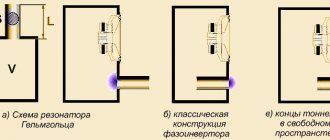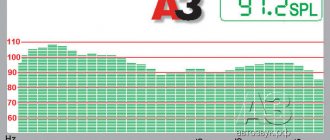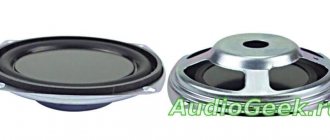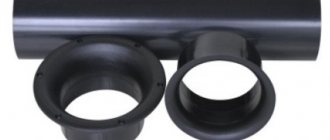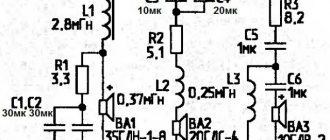From my clients I often hear a request to select acoustics with the obligatory condition that the assembly is not Chinese. Despite long-established trends, many people associate the inscription “Made in China” with conveyor belts and consumer goods. When it comes to acoustics, even inexpensive ones, the buyer wants to get a piece of the soul invested by the developers. In this review, I will share with you my impressions of the French Focal acoustics of the Chorus series, the production of which has been preserved in its historical homeland. The Focal factory is located in France in the small town of Saint-Etienne in the Rhône-Alpes region. The Chorus series is the youngest in the line of the French brand and has only 5 models: a pair of floorstanding speakers, one version of shelf speakers, wall-mounted speakers and, of course, a central channel. I tested the older model of the Focal Chorus 726 floor-standing acoustics.
Focal Chorus 726 white
Where to buy and prices for Focal Chorus 726
Appearance and design of Focal Chorus 726
The first thing that attracts attention is the solid weight of the model. A quick look at the competition's specs revealed that these are some of the heaviest speakers in the class. With a body height of less than 1 meter, the speaker weighs more than 23 kg! The acoustic body is made of 25 mm thick MDF panels with internal stiffeners. To understand how thoroughly this speaker is made, just knock on the body. Such a design with compact dimensions allows one to minimize unwanted vibrations, which, in turn, affects the sound quality of the system as a whole.
The cabinet design of the Chorus series is quite universal. Classic finishes: black, white and walnut. In black and white versions, the central part of the case is trimmed with a textured leather-like material - it looks very impressive.
Focal Chorus Series trim options
Please note that in the white version the front panel and top edge still remain black, the protective grill is also black.
The grill mount is on pins, although magnetic mounts have long been in fashion. This is probably my only criticism about the appearance of the acoustics; otherwise, everything is done at the highest level.
Design
Focal-JMLab, the second part of whose name stands for Jacques Mahul Laboratories, is one of the most reputable manufacturers of speakers and acoustic systems in France.
The company began its journey in the late seventies of the last century, when its founder Jacques Maule left Audax with the firm intention of starting his own business. To begin with, he brought to life a number of developments in the manufacture of speakers under the Focal brand, then began making speaker systems under the JMLab label. The Chorus 800V series is one of the company's entry-level lines. The distinctive feature of the line is its original design; in any display case the loudspeakers will stand out among competitors from other manufacturers. To give the Choruses a recognizable look, the developers used the services of the famous design studio Pineau at Le Porcher, whose specialists used a fashionable V-design in the Choruses.
The V symbol can be seen in the shape of the grills and other design elements of the speakers. To further emphasize the individuality of the new loudspeakers, the sides of their cabinets are finished in moka or ebony wood, while the rest of the surface is covered with black acrylic glass. The upper part of the facade attracts attention with an aluminum tweeter waveguide protected by a metal mesh.
The Chorus 816V cabinet is made from 20 to 25 mm thick MDF sheets, with the internal walls of the cabinet specifically made non-parallel to eliminate standing waves in the internal volume. To increase the impact at lower frequencies, the French used a dual PowerFlow port.
A port on the front of the speaker should improve the subjective perception of bass density, while a second port built into the bottom of the cabinet gives greater bass depth. The distance from the bottom port to the “floor” is fixed by an aluminum stand with a special diffuser.
The Chorus 816V crossover is made in a 2.5-way configuration. The frequency range above 3 kHz is supported by the new TNV tweeter. Like its predecessor TNC from previous versions of Chorus, the new tweeter is equipped with an inverted 25 mm dome made of aluminum and magnesium alloy, but has an improved motor with neodymium magnets and a new cooling system in which the developers abandoned the use of ferromagnetic fluid, considering , that it has a bad effect on the response speed of the emitter.
The midrange/bass drivers have a diameter of 165 mm and are equipped with membranes made of Polyglass composite material, developed by the French more than 10 years ago to replace high-quality, but very expensive W-diaphragms used in JMLab reference loudspeakers.
Polyglass is produced on the basis of impregnated cellulose cones, which are then coated with a thin layer of silicate microparticles. The midwoofer of the 816V model operates from lows to 3 kHz, and the bass driver delivers frequencies up to 300 Hz. Unlike the mid/bass driver, which is equipped with a central phase-equalizing bullet, the woofer is equipped with a wide dust-proof cup, which increases the rigidity of the membrane.
Design Features
Chorus 726 has a 3-way design. Low frequencies are handled by 2 speakers measuring 16.5 cm made of paper coated with the finest glass particles (Focal calls this technology Polyglass).
Focal Chorus 726 midrange and tweeter
A midrange driver of similar size is made using the same technology.
The proprietary aluminum-magnesium alloy tweeter is located on a metal plate that forms a small horn. In the lower part, on the front side, there is a bass reflex output. If necessary, you can place the acoustics as close to the wall as possible. However, don’t get carried away, if possible, move the acoustics in search of the optimal sound in your room. The cable connection terminals are located at the bottom of the case; BI-wiring/Bi-amping connections are not supported.
Cable connection terminals
The Focal Chorus 726 acoustics have a fairly high sensitivity of 91.5 dB, and a nominal impedance of 8 ohms, so choosing the appropriate amplifier will not be a big problem. In my opinion, the optimal area for this acoustics is 30 - 45 sq.m.
Measurements
The minimum speaker impedance value is fixed at around 140 Hz and at the FI system tuning frequency of 42 Hz, in both cases the resistance is 4.3 Ohms. The maximum of 20 ohms is noted at a frequency of 2.4 kHz. Thus, the 816V Choruses should not become a difficult load for the amplifier. The bends in the curve in the region of 170 Hz and 1.1 kHz do not lead to noticeable features in the frequency response, although the lower resonance is clearly visible in the individual frequency response of the midrange/bass section and front port speakers.
In the bass and upper octave ranges, the sensitivity of the speakers increases. Up to 20 kHz, the operating range is within +/–4 dB, the lower limit of the operating range at +/–3 dB reaches 49 Hz. The wide polar pattern allows you to slightly turn the speakers away from the direct direction towards the listener, in some cases this will even be useful, leveling the sensitivity of the midrange and high-frequency ranges.
Shall we listen?
When listening as an amplifier, we used the talented Japanese Denon PMA-1600 paired with a Denon DCD-1600 CD player.
The audition began with the popular Dire Straits hit - Money for Nothing. The composition perfectly demonstrates the transmission of drums, stage construction and the dynamic range of acoustics. Then there were female vocals, in particular Diana Krall, opera parts, a little jazz and even our compatriot Natalia O'Shea (Helavisa). By the way, listening to Melnitsa’s recording was the most revealing.
Stamping the tweeter and its suspension from Poron
From the first minutes you understand how energetically this French acoustic plays. The drum beats are transmitted clearly and quickly, the increasing dynamics are played out perfectly, and the guitar riffs sound with a slight touch of carelessness, which only adds to their charm.
While admiring the dynamics, it is important not to forget about the emotional component. Acoustic guitar and wind instruments are conveyed with a high degree of musicality, while being perceived easily and openly. Compared to them, I was a little confused by the sound of the double bass; it also sounded light, having lost its low-frequency density somewhere. When it comes to violins and cymbals, here acoustics manifest themselves in a unique way, adding a significant amount of brightness and focusing our attention on the high-frequency range. If the level of high frequencies seems excessive to you, try placing the speakers parallel to each other; this will not change the character of the sound, but the sound will be perceived softer.
The Focal Chorus 726 handled vocals superbly, creating the effect of the performer's presence with the proper emotions. Moreover, I liked the male vocals even more because of the good and moderately warm transmission of timbres.
In the case of multi-voice and orchestral recordings, acoustics perfectly render the scene, placing virtual instruments in their places. The sound is large-scale, but at the same time collected.
Focal Chorus 726
For the Chorus 726 acoustics, the quality of the recording of the composition is important. As I already said, the most impressive performance was by the Melnitsa group. Unfortunately, the recording quality left much to be desired. The stereo system mercilessly brought to the surface all the dirt and imperfections of the recording; it was impossible to listen to this, despite all the charms of Helavisa’s voice. The conclusion is simple, if you want to enjoy music, build your music collection from high-quality recordings.
Sound
Chorus 816V are distinguished by dynamic sound, the tonal balance is somewhat shifted to the edges of the frequency spectrum, the upper bass is especially tight, so the rhythm section in music of any genre “looks” more than presentable. Elastic bass with a solid margin of strength and amplitude is balanced at the other end of the frequency spectrum by juicy trebles with an exemplary sharp sound of high hats and other high-frequency tinsel. There is only one drawback here: despite good detail, the top sometimes sounds “rough”.
In general, the smooth midrange has a slight emphasis on the lower middle, so male vocals or the timbres of bassoon, cello, and acoustic guitar are reproduced with particular thoroughness. While perfectly mastering the sound on all sorts of dynamic bursts, the speakers are a little less attentive to the details of the arrangement and the overtonal structure of the sound. The Frenchwoman builds the scene effectively, with a scope and enlargement of foreground images, bass and treble images are presented prominently, distant layers of space are drawn a little less accurately and in detail.
Price : 57,960 rubles.
Instead of results
Before this audition, I already had experience with the Focal Chorus 726 installation, but the system used an English amplifier with a strongly accentuated bright musical signature and at that moment I did not like the sound of the system at all. In this case, we used an amplifier with good tonal balance and a well-developed midrange, the acoustics showed themselves to be completely different, demonstrating a dynamic and dense sound, and brightness and airiness turned into strengths. Focal Chorus 726 will be interesting both as an independent stereo pair (just be careful when choosing an amplifier) and as front speakers in a home theater system. Add to this a charismatic appearance, high-quality finishing and the Made in France nameplate - what’s not a reason to be proud?




